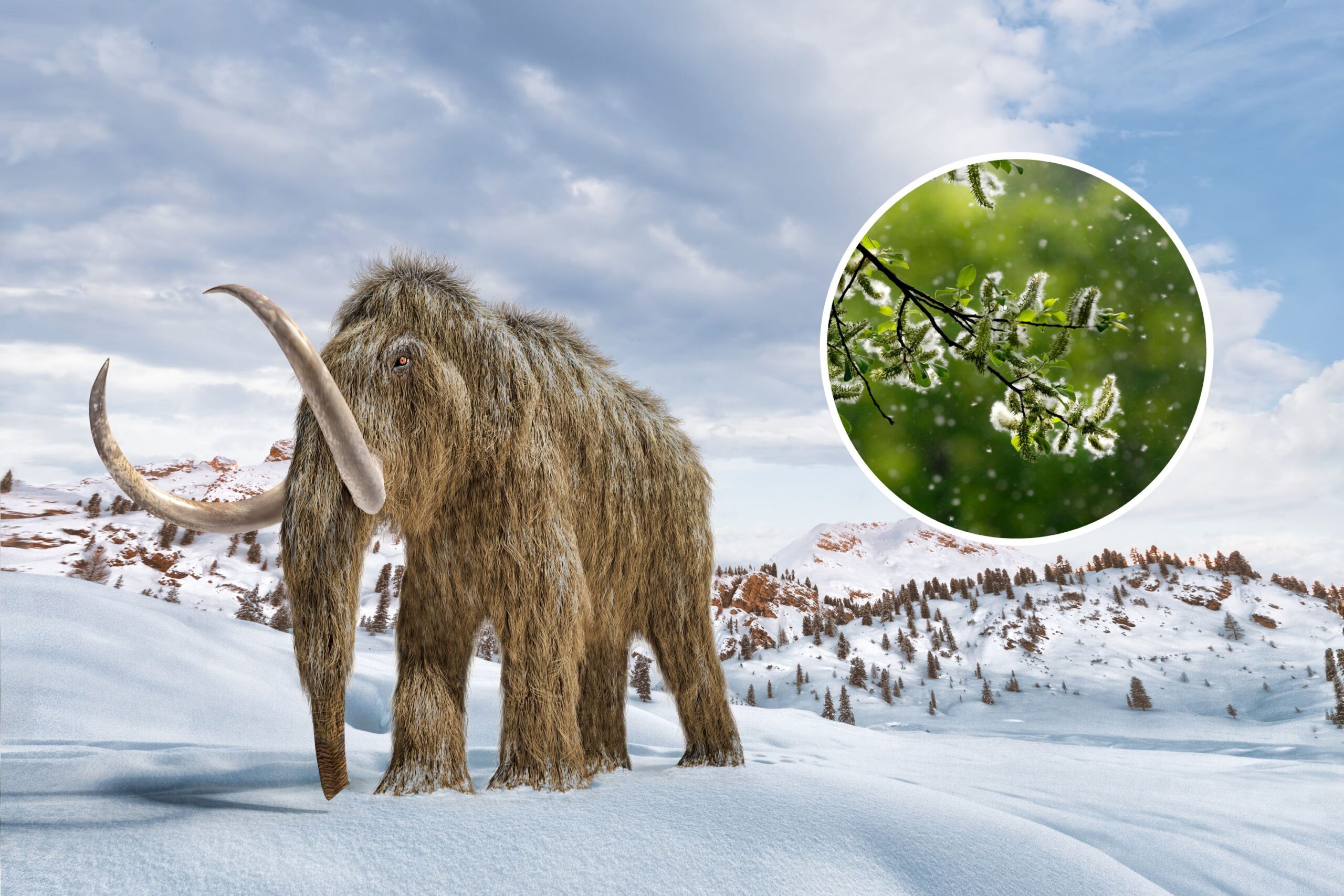Allergies: Woolly Mammoths’ Hay Fever May Have Helped Drive Them to Death
Woolly mammoths may have gone extinct because of a rather less dramatic reason than some other theories—stuffy noses from allergies.
Frozen tissue samples from mammoth remains have been found to contain traces of antibodies and allergens, indicating that these ancient giants may have been experiencing plant allergies as the climate shifted, impacting their ability to smell, according to a new paper in the journal Earth History and Biodiversity.
If the mammoths couldn’t smell, then they may not have been able to pick up each other’s scents, and therefore not have been able to find mates as easily, leading to their population declining.
ISTOCK / GETTY IMAGES PLUS
“One of the possible mechanisms for the extinction of animals during climate change could be a violation of the sense of smell due to the development of allergies when the flora changes,” the researchers wrote. “During the breeding season, susceptibility to odors is very important for animals.”
Mammoths—including the woolly version—were large, elephant-like mammals that roamed much of the Earth during the Pleistocene epoch, from around 5 million to about 4,000 years ago. Mammoths began to decline around 10,000 years ago, near the end of the ice age. Their extinction is thought to be due to a combination of factors, including food source changes and habitat loss due to the changing climate, and hunting from ancient humans.
The changes in plant species resulting from the shifting climate are suspected to have also contributed to the decline of these furry giants, triggering allergies.
According to the paper, the researchers examined tissue samples from frozen mammoths found in Siberia. In the tissue, they discovered traces of antibodies (also called immunoglobulins) alongside organic compounds similar to those found in particles of pollen, indicating that the mammoths were having an allergic reaction to the plants, just like hay fever.
“Immunoglobulin fragments found in the remains of mammoths indicate the presence of possible allergic diseases in mammoths,” the researchers wrote.
If these allergic reactions ended up blocking up their nose, as it does in humans, then it may have prevented the mammoths from smelling out the pheromones given out during their mating season, limiting sex and therefore offspring.
“The development of allergies from plant pollen, changes in pollen’s allergic toxicity, pollen’s release period increasing or the emergence of a large quantity of flowering plants during climate change, could lead to decrements in sensitivity to odors in animals during the breeding season. This may explain the extinction of animals due to a decrease in sexual intercourse,” the researchers wrote.
While we don’t have direct observational evidence of how mammoths mated, due to them being long-extinct, we can make reasonable inferences based on their close living relatives—modern elephants. Mammoths, like elephants, were social animals, and many aspects of their reproductive behavior likely followed similar patterns.
Mammoths probably had a distinct breeding season, during which males would compete for the chance to mate with females, with the females like their elephant counterparts, likely going through periodic cycles of fertility. Female mammoths probably emitted chemical signals that indicated their reproductive status, with these pheromones alerting nearby males that she was ready to mate.
If the mammoths couldn’t smell due to allergies, then it may have been much harder for them to find receptive mates, possibly leading to a decline in population.
“[We] propose a new hypothesis of evolutionary mechanism for the extinction of mammoths and other animals based on the disruption of communications between animals during the breeding season due to a decrease in the sense of smell and sensitivity to odors due to allergies to plants,” the researchers wrote.
Do you have a tip on a science story that Newsweek should be covering? Do you have a question about mammoths? Let us know via science@newsweek.com.
References
Zilberstein, G., Zilberstein, S., Righetti, P. G., Cunsolo, V., Tikhonov, A., & Bublichenko, A. (2024). Sense of smell reduction as factor for mammoth’s and other mammals extinction. Immunoglobulins as possible markers. Earth History and Biodiversity, 1. https://doi.org/10.1016/j.hisbio.2024.100008








